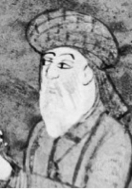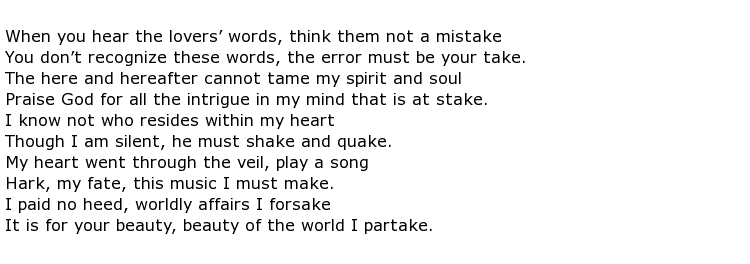 The middle-eastern medieval poet Shams al-Din Hafiz, also known as Hafiz of Shiraz, was famous as a “reciter”. He claimed that he had the ability to recite the Qur’an in at least fourteen different forms although his biographer and friend, Muhammad Gulandam, stated that this number should be no higher than seven.
The middle-eastern medieval poet Shams al-Din Hafiz, also known as Hafiz of Shiraz, was famous as a “reciter”. He claimed that he had the ability to recite the Qur’an in at least fourteen different forms although his biographer and friend, Muhammad Gulandam, stated that this number should be no higher than seven.
He was born Khwajah Shams al-Din Muhammad Ibn-i Muhammad some time during the period 1317 to 1326 in a central Iranian town called Isfahan. His father was a coal merchant and moved the family to Shiraz, but he died early in Hafiz’s life, leaving the family with serious financial difficulties. It is believed that he was taken in and employed making dough for a baker. Some accounts suggest that he was later employed as a teacher, and perhaps as a scribe and scholar. The poetry that still exists suggests that Hafiz was certainly a well-educated man as he had extensive knowledge of sciences and Persian literature, and was fluent in the Arabic and Persian languages.
He lived at a time where poetry was not always appreciated or supported by some of the ruling dynasties, such as the Muzaffarids and the Timurids. Indeed, scholars and writers were often persecuted if they protested too much about the workings of government. Throughout history young men, wherever they lived, were quick to join activists and protestors and Hafiz was no exception. He often sought the society of fellow writers and artists and they would often meet to discuss the ways of the world.
Unlike some though, Hafiz chose not to travel far beyond his home town although he was forced into exile once due to his allege anti-social behaviour. On another occasion he was planning a visit to India but only got as far as Hormuz which is a port on the Persian Gulf. The storm-tossed seas that he saw ahead of him brought about a change of heart, and he returned home to Shiraz.
As a poet, Hafiz was extremely popular during his lifetime with his diwan being of particular significance. Most Iranians consider him to be the Lisan al-Qaiyb (tongue of the unperceived) and his diwan is spoken of as if it were the holy Qur’an itself. He also mastered the art of composing the ghazal (also known as the sonnet). He composed a number of Sufic ghazals, mostly containing seven beyts, although others contain more than seven and have been the subject of intense analysis over the subsequent years. Over a fifty-year period, Hafiz composed some 500 ghazals and 42 Rubaiyees, with a smaller number of Ghaseedehs thrown in.
It has been said that Hafiz only composed poetry when he was “divinely inspired”. Here is an example of his work – the opening lines of Ghazal 22:

He seems to have occasionally courted controversy amongst students of Persian Literature. It has been suggested that some of his work conveys subtle Sufic messages to those who are clever enough to interpret such hidden thoughts. The suggestion is that he portrays profane love, hidden behind allegorical symbolism. It seems, though, that it depends on where you come from as to how you interpret this work. Western scholars, for example, can place different values on it to those of Eastern scholars.
It is believed that Shams al-Din Hafiz died around the year 1389 with his age being estimated at 69 years old.

